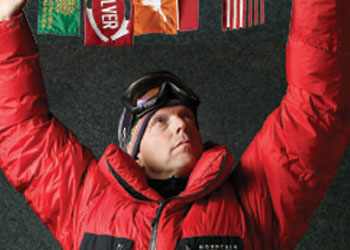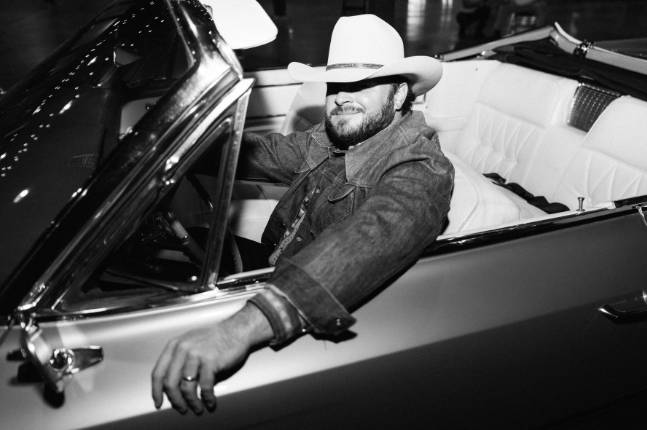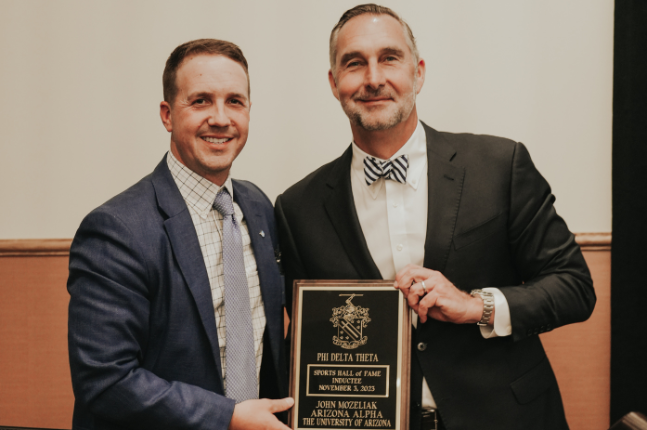With the Winter Olympics in Sochi, Russia going on, it’s a good time to remember Phis who have been involved with the U.S. Olympic teams. Among these is Robie Vaughn, Texas, ’78, who fought to bring the sport of skeleton back to the games.
The Q&A below recounts his fight to bring the skeleton back to the Olympics and tips for those brave enough to try the sport. You can also check out his book, Headfirst.
skel e ton: (skěl ə tən) n. The kamikaze sport of sliding headfirst on a sled down an icy track.
Q: If you were to describe skeleton to someone who had never heard of the sport what would you tell them?
A: Imagine lying down on a sled, headfirst and sliding downhill on smooth, slick ice with no way to brake and limited ways to steer. You go faster and faster, and the turns come at you quicker and quicker, as the accompanying G-forces take more and more of a toll, until your speed finally begins to slow and you glide to a stop. Your mind is unable to comprehend what it just experienced and your adrenaline continues flowing for hours!
Q: How does one get involved with skeleton sliding? Where does he or she go and what should one know?
A: There are three bobsled, luge and skeleton sliding tracks in North America: Calgary, Alberta, Canada; Lake Placid, New York; and Park City, Utah. Additionally, there is a fourth venue currently being constructed in Whistler, British Columbia, Canada, for the 2010 Olympic Winter Games. Calgary, Lake Placid and Park City offer introductory, one-and three-day clinics along with “Fantasy Camps.”
Q: How does one train to become a better slider, and are there certain exercises or workouts that might help?
A: Getting used to the sensation and experience of sliding and developing a thorough knowledge of safety and equipment is initially important. Secondly, getting as many runs in as possible (maximum of three per day) is necessary. You must have proper coaching in order to improve. Ultimately, utilizing fast-twitch muscle fibers for a fast push and an aerodynamic body position are important as well.
Q: When you first found out that skeleton was not on the Winter Olympic ballot nor had it been for over fifty years, what where your first thoughts on the situation?
A: That it was so exciting, it probably would be admitted to the Olympics, especially as bobsled and luge had been in for so long and it used the same facility.
Q: What inspired you to connect with this sport to the point that you dedicated so much of your time and energy in getting involved? What was the turning point?
A: The sliding experience itself, the possibility of improvement, the people involved, and the obvious void in leadership and organization. The initial “turning point” for me was making the World Cup Team for the 1998–1999 season. I could then see what was needed for a program to be successful from an athlete’s point of view.
Q: What skills did you take from your business background that helped organize the American skeleton program?
A: Structuring the program, engaging the most qualified people to become the management and coaching team, communication, logistical organization and teamwork, which includes fairness, objectivity, inclusiveness, and trust!
Q: How difficult was it having two roles in skeleton—one as an athlete and the other as organizer?
A: It was fine until the potential for conflict of interest evolved. The National and Olympic Team selection criteria versus the management and responsibilities of those criteria could have been points of contention. Additionally, I did not wish to “block” younger sliders coming up in the rankings.
Q: How and why did skeleton make it out of its limbo-status and onto the Olympic docket?
A: Many, many years of lobbying the International Olympic Committee by the international governing body for bobsled and skeleton (FIBT), individuals, United States Olympic Committee and United States Bobsled and Skeleton Federation. Also, the desire to include Women’s Bobsled and the Salt Lake City Olympic Organizing Committee’s bribery scandal played ironic rolls in helping skeleton’s inclusion during the process.
Q: Do you feel the sport of skeleton will grow in popularity, as say something like snowboarding, and take hold in popular culture? Also, what is the largest competition for skeleton and is competition televised?
A: The sledding sports will never be as popular as skiing and snowboarding, from a participation standpoint, as there are limited venues on which to train and compete in North America (Calgary, Lake Placid, Park City). However, tremendous growth in participation and awareness continues to increase since the U.S.A. success and introduction of skeleton in the 2002 Olympic Winter Games.





